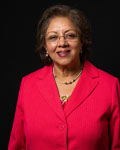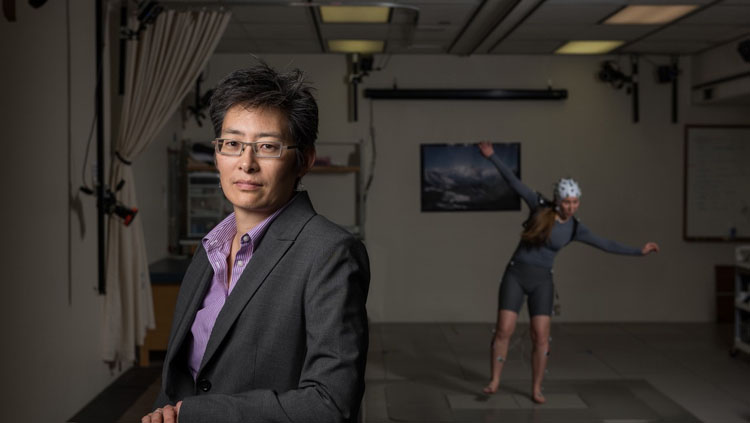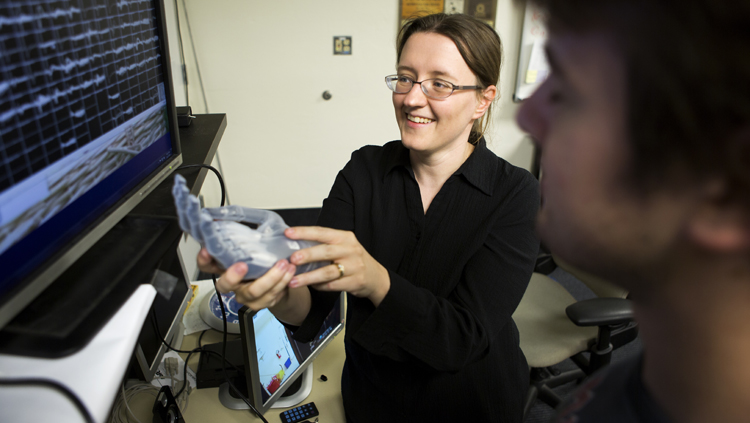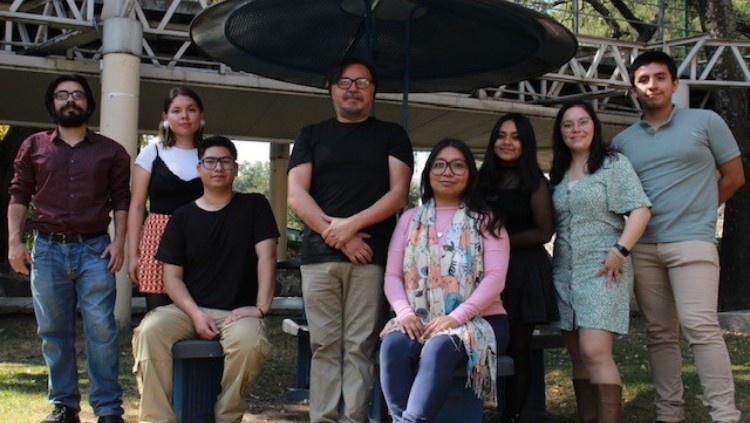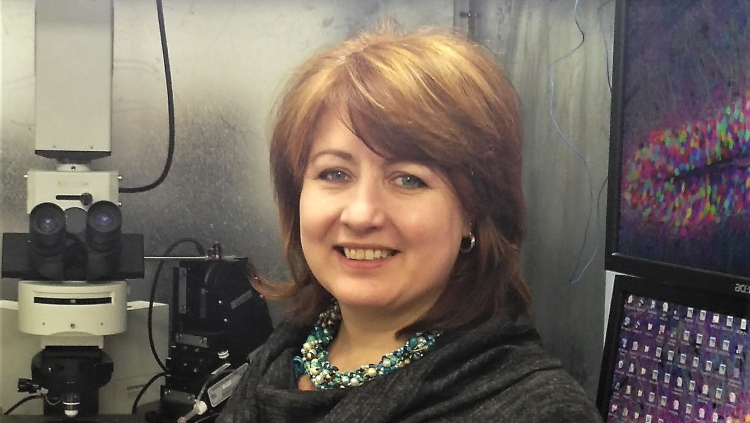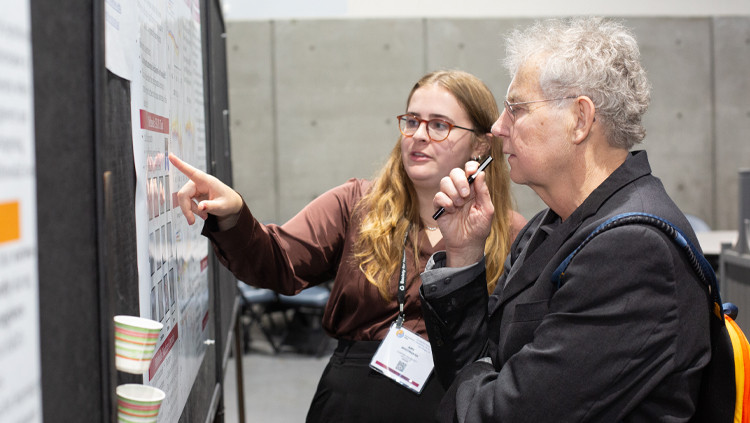Ranu Jung on Neural Engineering and Her Philosophy Behind Bringing Discoveries to Humans
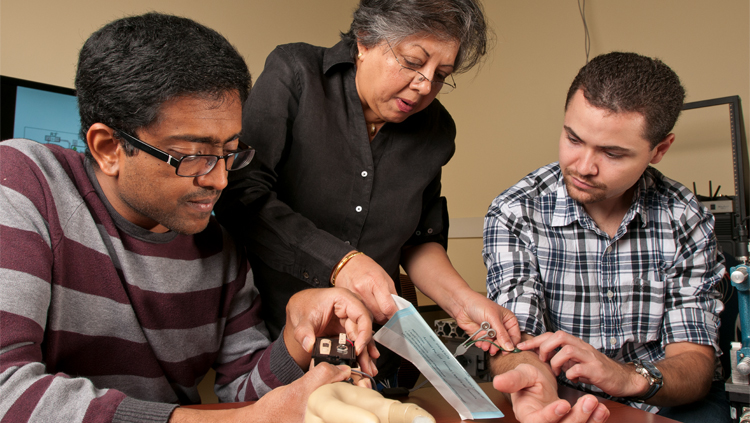 |
|
|
This resource was featured in the NeuroJobs Career Center. Visit today to search the world’s largest source of neuroscience opportunities.
As director of the Adaptive Neural Systems Laboratory and the owner of more than a half dozen patents, Ranu Jung designs neural engineering projects that drive the process of transforming basic discoveries into clinical applications. In this interview she explains how collaborative projects can at once advance the understanding of the brain and the development of medical devices. She also talks about what sparks questions for her, the advantages of adaptability, and where to find support.
This article is part of Neuronline’s interview series “Entrepreneurial Women Combining Neuroscience, Engineering, and Tech,” which highlights the career paths and scientific accomplishments of female leaders and role models who are creatively bridging disciplines to improve lives.
To start, could you tell us how you carved out space for yourself in neural engineering?
It always starts with curiosity. How does the living system function? That has always been a driving question for me.Like many other biomedical engineers, I couldn’t decide if I wanted to go into medicine or engineering. I was fascinated by both, so it was a high moment when I realized there was a way to combine the two. I grew up and did my undergrad in India, but I came to the United States because there were doctoral programs in biomedical engineering. I started with investigating the cardiovascular and respiratory control systems and then added computational neuroscience, and making devices to stimulate the nervous system — all of which came together in the field we now call neural engineering.
In a sentence or two, how would you describe your work?
My work is to understand the nervous system and to engineer control systems and devices to restore function lost after trauma or disease.
What sparks questions for you?
It always starts with curiosity. How does the living system function? That has always been a driving question for me. Why does the heart do this? Why does the brain do this? How is it directed through rhythm control? It's questions like that that form the basis of my curiosity.
 |
|
|
Sometimes I take on a project just out of curiosity. I'm lucky to be in an academic environment where I can do that. Those projects are never completely out of the realm of what I do, but I'll take a broader approach, talk to some of my team, and ask what they’re doing and if they’d want to take something on. Sometimes it doesn’t pan out, but other times it does.
Your lab describes its work as driven by the needs of potential users. Can you talk more about the philosophy behind your work?
The philosophy is that understanding what a person’s needs are helps us to identify the gaps in our knowledge, for basic science discovery or for generating a cure.
I think of it as a pathway. When I talk to my students, it’s in terms of four D's: discover, design, develop, deliver. Your discovery is really your design discovery process, and the design is that of your intervention or device. Then you must develop and deliver it so it goes into practice.
In this continuum, you need more than one person to cultivate understanding. The person leading the discovery phase will understand the needs of the person and what has to be delivered, which will guide them in the design process. Similarly, the person focused on the delivery phase will understand where there may be gaps in knowledge and if delivery can happen today, tomorrow, or in 50 years.
How have partnerships and collaborations driven innovation in your lab? Could you give an example of an accomplishment that required the work of a team?
We have a current clinical trial in which we are implanting a new stimulation device into the partial arms of upper limb amputees, to restore sensation. Fine wire electrodes are implanted inside nerves. We are doing studies to better understand what kind of stimulation to use in order to invoke somatosensory percepts. This project has and continues to require a large team effort.
It always starts with curiosity. How does the living system function? That has always been a driving question for me. Why does the heart do this? Why does the brain do this? How is it directed through rhythm control? It's questions like that that form the basis of my curiosity.
The philosophy is that understanding what a person’s needs are helps us to identify the gaps in our knowledge, for basic science discovery or for generating a cure.For example, in the technology development process, we implanted wires inside the peripheral nerves of rabbits to make sure the material coating the wires wouldn’t cause undesirable effects in a living system.
What you implant in the animal model cannot be made in the lab. You need the implants to be made with the same approach and materials as what would go into a human. That means partnering with industry, and we worked with surgeons on an approach to implant the device, so we have appropriate data to present to the FDA. The FDA approved us for an investigational device. Finally, we worked with the Intuitional Review Boards to get approval do a clinical trial.
As we’re refining the technology, we’re also looking at how the subject is responding, and asking basic science questions.
How do you hope your work makes an impact?
My sincere hope is that the technology we’re working on will improve quality of life, that it will make a difference. The person who is using the neural-enabled prosthetic hand system we developed has expressed many times that it has improved his confidence. We need to see the outcomes from more participants in the clinical trial, but my hope is that this technology will change people’s lives.
What challenges have you run into throughout your career? How have you learned from them?
Different challenges arise in different phases of your career. Your mindset needs to find a way to be resilient. If you fall down, you get up, and you move on. If you apply for a grant, for example, and you don't get it, then you re-apply and, if necessary, change your direction.
Sometimes you have to stop and say, “This is not the pathway that is going to move forward.” That may happen in the administrative structure, it may happen in research, it may happen in other aspects of your overall professional work. Then you find another pathway, another group of people to work with, another team to pick it up. You find a different route.
There are hurdles. Some you know are coming and can anticipate, and others you are blindsided by. But I’ve learned to say, “All right, there is another pathway. It’s not the end of the world. I'll find another pathway.” I am still learning to do that.
What has been your experience as a woman in a traditionally male-dominated field?
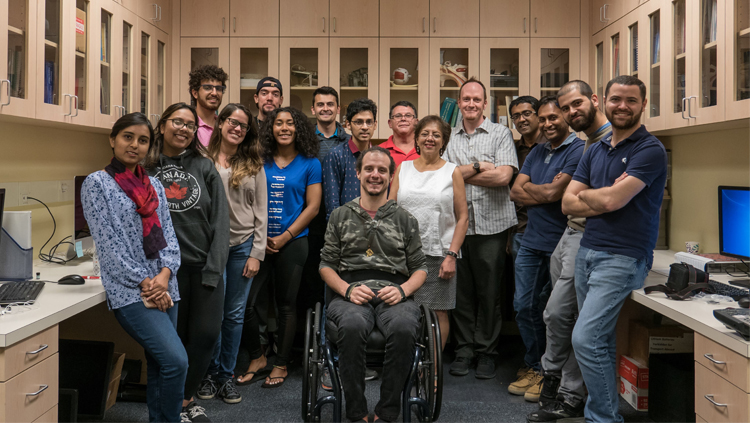 |
|
|
It can be isolating. In undergrad there were only three women in engineering who were my year. So you do get isolated, and that can be tough, because you cannot share everything as well as you could in a more open and supportive environment.
On the other hand, you do find that if you're among men, those men will become your support structure, with whom you can try to overcome gaps in the social structure that leave you at a disadvantage. You have to find ways of interacting with them and trying to understand their viewpoints.
My biggest advice is to be flexible and adaptive, and to be supportive.I’ve also drawn inspiration from women who didn’t know they were my role models. Some were in completely different fields, but if I saw that a woman succeeded, I asked myself, How did she get there? How did she do it?
You can also find support from women in the field who aren’t necessarily in your workplace. I have friends who are mathematicians and physicists around the world.
What’s your biggest piece of advice for women considering a similar career?
My biggest advice is to be flexible and adaptive, and to be supportive. If you’re the only female and feel like you’re in uncharted territory, know that your male colleagues may feel like they’re in uncharted territory, too. They may not have worked with someone like you, so they may not be cognizant of barriers they’re imposing.
Open the dialogue wherever you can, whether it’s in a research lab or with your students, to bring awareness to different perspectives. It’s important that everyone assume the responsibility of taking that first step toward creating a more welcoming environment.
Speaker
